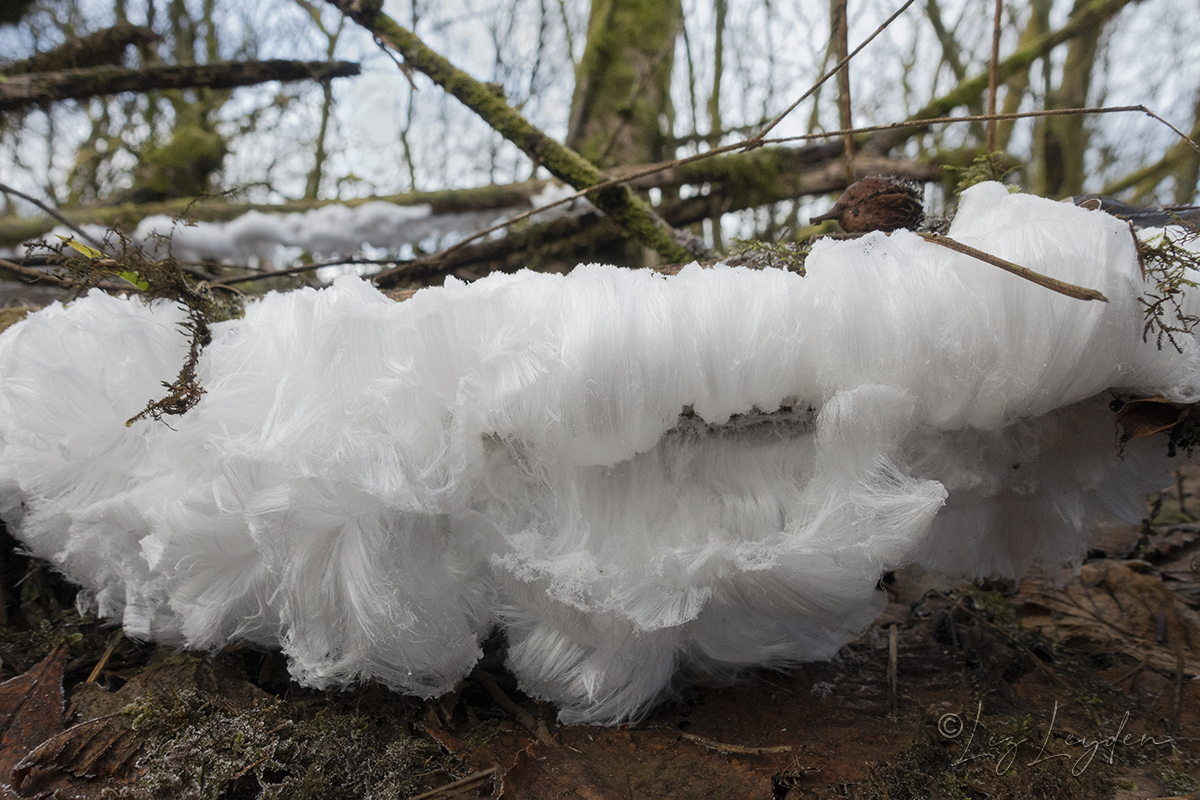Hair ice was only first noted about a hundred years ago, when the meteorolist Alfred Wegener, the discoverer of ‘Continental Drift’, observed it in 1918, noting that it grew exclusvely on dead wood, and speculating that it was ’caused by a fungus’.
Almost 100 years later, in 2015, a trio of scientists: Germans Diana Hofmann (chemist), Gisela Preuß (biologist) and Swiss physicist Christian Mätzler joined forces to get to grips with the phenomenon.
Gisela Preuß studied samples of wood which had borne ice hair between 2012 and 2014 and discovered eleven species of fungus, but only Exidiopsis effusa was present in every sample, and in 50% of samples, it was the only fungus present.
Examining samples found in Switzerland, Christian Mätzler investigated the physical properties of hair ice, confirming earlier theories that that the driving mechanism responsible for producing ice filaments at the wood surface is ‘ice segregation’. He said, “The same amount of ice is produced on wood with or without fungal activity, but without this activity the ice forms a crust-like structure. The action of the fungus is to enable the ice to form thin hairs – with a diameter of about 0.01 mm – and to keep this shape over many hours at temperatures close to 0°C. Our hypothesis includes that the hairs are stabilised by a recrystallisation inhibitor that is provided by the fungus.”
Diana Hofmann then studied the hair ice itself. Her chemical analyses of the melted ice showed the water to contain fragments of the complex organic compounds lignin and tannin. Since these are metabolic products of the fungal activity, this finding further confirms the biological influence on hair ice. “These components may be the ones preventing the formation of large ice crystals at the wood surface.”
Hofmann, D., Preuss, G., and Mätzler, C.: Evidence for biological shaping of hair ice, Biogeosciences, 12, 4261–4273, https://doi.org/10.5194/bg-12-4261-2015, 2015.
This photo is copyright © Liz Leyden, all rights strictly as agreed in writing with the author or her agent.
It is available to purchase as a stock photo from iStock.


